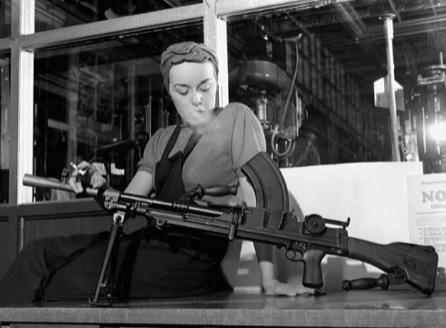- Reaction score
- 0
- Points
- 210
Hi was rummaging through my SWW stick concerning the Normandy Campaign Phase II, seems I complied a lot of stuff for Aug 1944, however never wrote about it.
The below is extracted from the Montreal Gazette, once you link the begging of the article is on the previous page.
Newspaper: The Montreal Gazette, 5th Oct., 1968: Why aren’t there any monuments to our soldiers? By Guy Simonds, Lieutenant-General (retired).
A Problem for the Canadians was that first they were bombed by U.S. planes and then (“Oh no, not again”) by the RAF.
One morning in June, he and I stood beside the Caen-Falaise road at a point where, 24 years before, on the night of Aug. 7, 150,000 men of the 2nd Canadian Corps had launched Operation Totalize, the thrust that began the closing of the Northern Half of the Falaise Gap. And yet, standing there that morning, you would never know there had been a battle. The grain fields, the woods, the little stone villages, the lines of trees that marked the path of the lateral roads, all seemed eternal and timeless beneath the pale blue sky.
That night in 1944, more than 1,000 Royal Air Force bombers had flattened the German positions east and west of an eight-mile corridor, Simonds had selected for the attack. I asked him what it had been like. “Like all the worst thunderstorms you have ever been in in your life, only worse. The ground was shaking underneath us.” Simonds had watched the bombing and started the attack columns on their way to their objectives. What had he done then? I asked.” He smiled. “I went to bed, he said” You see, people have a mistaken idea of what a general does. I’d spent several days planning the operation. After I’d sent in, there was nothing I could do except wait for the morning.
“When you send in an operation of that size at night, there’s nothing you can do to influence the course of it until you can see what’s taken place, and then, of course, you can do a good deal. I knew that there’d be plenty of decisions to make the fallowing day, so I decided to get some sleep.”
When Simonds woke the next morning, the attack was going well, and he orderd the second phase to go in at noon as scheduled. It consisted of a daylight raid by 492 American heavy bombers similar to the one preceding the attack the previous night, only further along the flanks of the corridor, fallowed by the commitment of another two armourd divisions to the battle.
https://news.google.com/newspapers?nid=1946&dat=19681005&id=T40yAAAAIBAJ&sjid=GbkFAAAAIBAJ&pg=1329,1334499&hl=en
THK U FR YR TME,
C.U.
The below is extracted from the Montreal Gazette, once you link the begging of the article is on the previous page.
Newspaper: The Montreal Gazette, 5th Oct., 1968: Why aren’t there any monuments to our soldiers? By Guy Simonds, Lieutenant-General (retired).
A Problem for the Canadians was that first they were bombed by U.S. planes and then (“Oh no, not again”) by the RAF.
One morning in June, he and I stood beside the Caen-Falaise road at a point where, 24 years before, on the night of Aug. 7, 150,000 men of the 2nd Canadian Corps had launched Operation Totalize, the thrust that began the closing of the Northern Half of the Falaise Gap. And yet, standing there that morning, you would never know there had been a battle. The grain fields, the woods, the little stone villages, the lines of trees that marked the path of the lateral roads, all seemed eternal and timeless beneath the pale blue sky.
That night in 1944, more than 1,000 Royal Air Force bombers had flattened the German positions east and west of an eight-mile corridor, Simonds had selected for the attack. I asked him what it had been like. “Like all the worst thunderstorms you have ever been in in your life, only worse. The ground was shaking underneath us.” Simonds had watched the bombing and started the attack columns on their way to their objectives. What had he done then? I asked.” He smiled. “I went to bed, he said” You see, people have a mistaken idea of what a general does. I’d spent several days planning the operation. After I’d sent in, there was nothing I could do except wait for the morning.
“When you send in an operation of that size at night, there’s nothing you can do to influence the course of it until you can see what’s taken place, and then, of course, you can do a good deal. I knew that there’d be plenty of decisions to make the fallowing day, so I decided to get some sleep.”
When Simonds woke the next morning, the attack was going well, and he orderd the second phase to go in at noon as scheduled. It consisted of a daylight raid by 492 American heavy bombers similar to the one preceding the attack the previous night, only further along the flanks of the corridor, fallowed by the commitment of another two armourd divisions to the battle.
https://news.google.com/newspapers?nid=1946&dat=19681005&id=T40yAAAAIBAJ&sjid=GbkFAAAAIBAJ&pg=1329,1334499&hl=en
THK U FR YR TME,
C.U.


